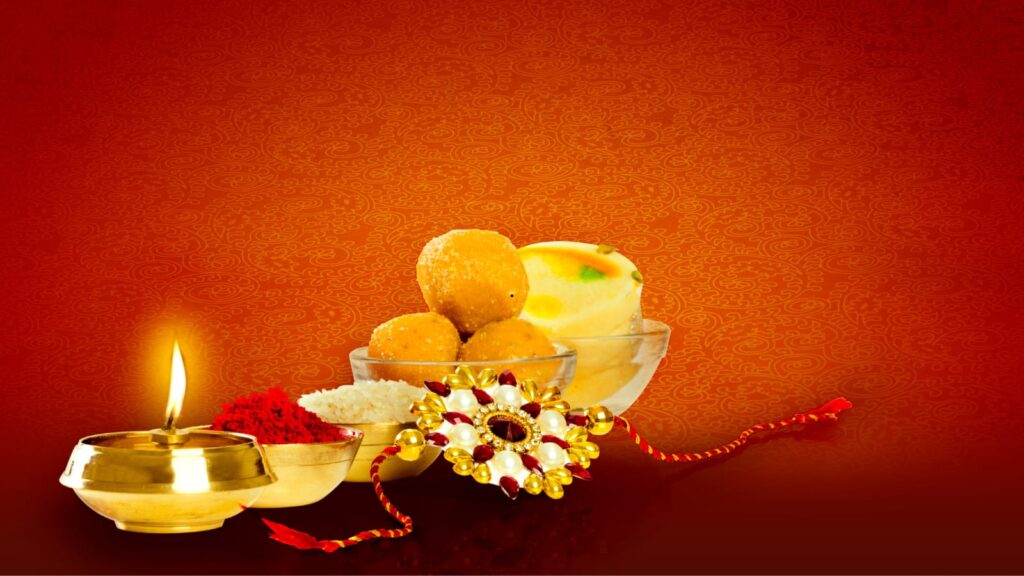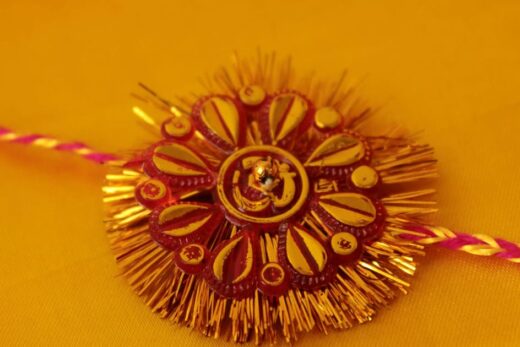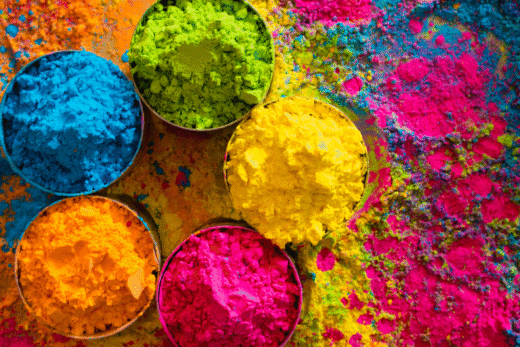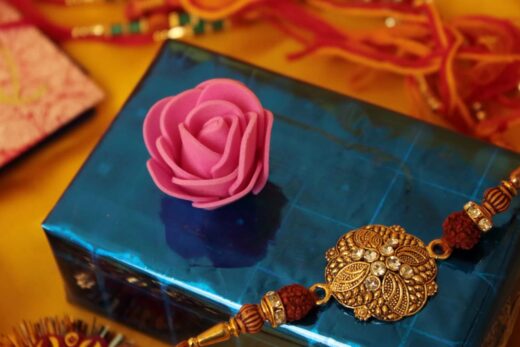Raksha Bandhan: India is a land of diverse festivals, each filled with emotion, culture, and tradition. Among them, Raksha Bandhan stands out as a festival that beautifully celebrates the deep-rooted bond of love, trust, and protection between brothers and sisters. The image portrays the essence of Raksha Bandhan — a traditional Rakhi, sweets, a lit diya, and ceremonial elements like roli and rice, all of which come together to reflect the vibrant spirit of this cherished occasion.

The Significance of Raksha Bandhan
Raksha Bandhan, often referred to simply as Rakhi, is an annual Hindu festival that typically falls in August on the full moon day (Purnima) of the Shravan month. The term “Raksha Bandhan” translates to “the bond of protection.” On this day, sisters tie a sacred thread called Rakhi around their brothers’ wrists, praying for their well-being, success, and happiness. In return, brothers promise to protect their sisters and offer them gifts as a token of their love.
But this ritual goes far beyond a thread. It is a symbolic gesture of care, a celebration of memories, and a renewal of a promise that transcends time and distance.
Read More: The Timeless Bond of Raksha Bandhan: Celebrating Love, Protection, and Tradition
Rituals and Traditions
The image showcases the core elements used during Rakhi celebrations. Sisters prepare a thali (plate) containing a diya (lamp), roli (vermilion), chawal (rice), sweets, and the Rakhi itself. The diya is lit to invoke divine blessings, and the roli and chawal are applied on the brother’s forehead as a tilak — a symbol of auspiciousness and love.
The Rakhi, often beautifully crafted with beads, pearls, or threads, is tied around the brother’s wrist as the sister recites prayers for his health and prosperity. The brother, in turn, showers his sister with love, gifts, and reassurances of lifelong protection.
The Role of Sweets
No Indian festival is complete without sweets, and Raksha Bandhan is no exception. The image prominently features traditional Indian sweets like laddoos and soan papdi. These sweets are not just treats but carriers of emotion and celebration. Sharing sweets signifies the joy of togetherness, the sweetness of the sibling relationship, and the warmth of familial ties.
Evolving Celebrations in Modern Times
While traditionally Raksha Bandhan was celebrated between biological siblings, the definition has evolved over time. Today, Rakhi is tied not just by sisters to their brothers but also by friends, neighbors, and even across communities, symbolizing harmony and unity.
In urban and globalized settings, where siblings may live far apart, virtual Rakhis and online gifts have become common. However, the emotional depth of the festival remains untouched. Whether it’s a handmade Rakhi sent by post or a heartfelt video call during the ceremony, the essence of Raksha Bandhan continues to bridge physical distances with emotional closeness.
Cultural and Mythological Roots
The festival is also deeply embedded in Indian mythology and history. One popular legend is that of Lord Krishna and Draupadi. When Krishna hurt his finger during a battle, Draupadi tore a piece of her saree and tied it around his wound. Touched by her gesture, Krishna vowed to protect her always — a promise he kept during her hour of greatest need.
Another story features Rani Karnavati of Mewar, who sent a Rakhi to Emperor Humayun seeking protection for her kingdom. These tales highlight how Raksha Bandhan has historically symbolized trust, loyalty, and the moral duty of protection.
A Celebration Beyond Religion
Though rooted in Hindu tradition, Raksha Bandhan today is celebrated by people of many faiths and communities in India. It’s a testament to the universal appeal of love, care, and familial ties. Schools, offices, and organizations also organize Rakhi events, spreading messages of unity and peace.
Conclusion
Raksha Bandhan is more than a ritual; it’s an emotion, a festival that binds hearts, strengthens relationships, and revives memories of shared childhoods. The visual elements in the image — the flame of the diya, the sacred Rakhi, the vibrant colors, and the delectable sweets — all come together to tell a story of affection and tradition that’s deeply woven into the Indian cultural fabric.
As we celebrate Raksha Bandhan, let us cherish the bonds we share with our loved ones, honor the traditions that shape our identity, and pass on these values to the next generation. Whether celebrated with grandeur or in simplicity, Rakhi continues to shine as a symbol of selfless love, enduring promises, and the beauty of siblinghood.




